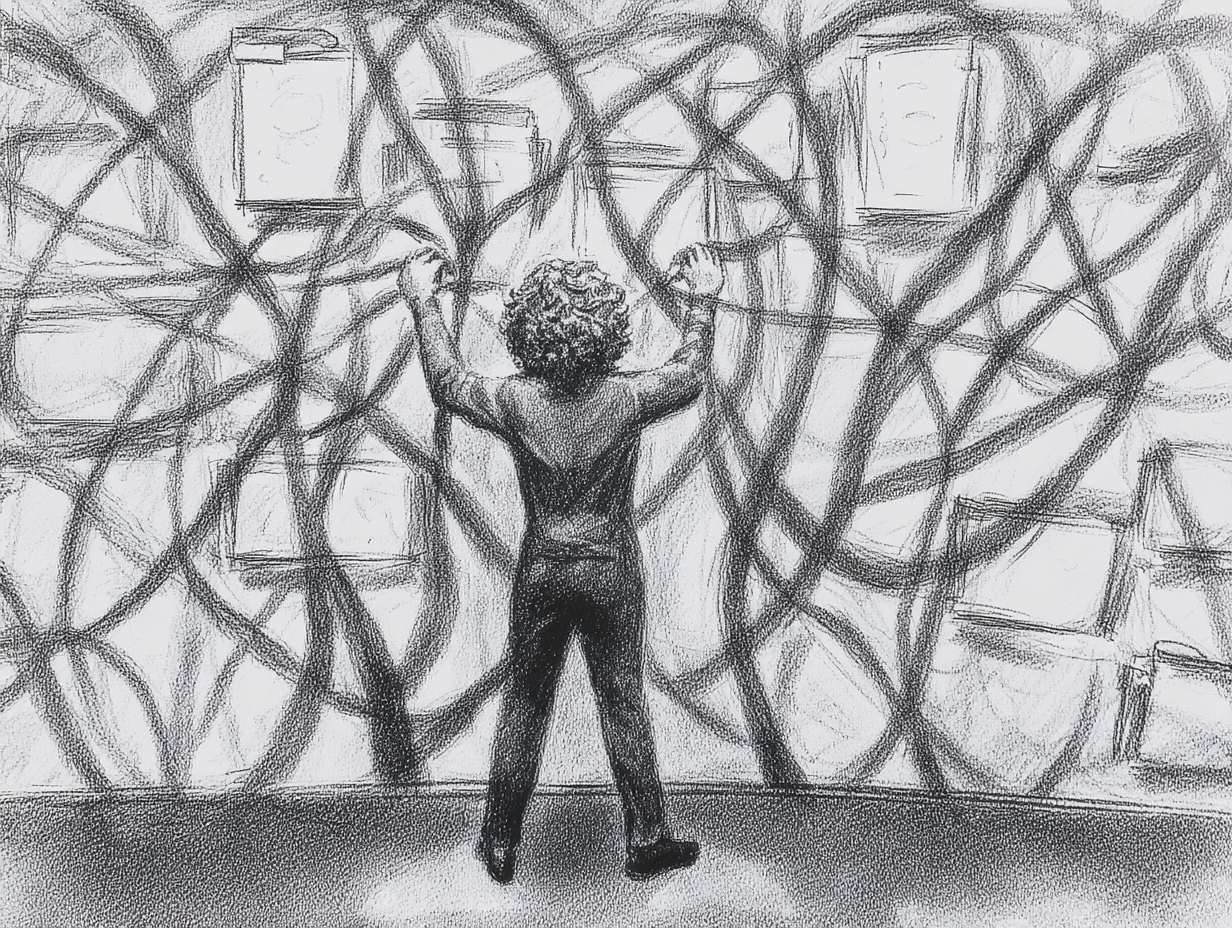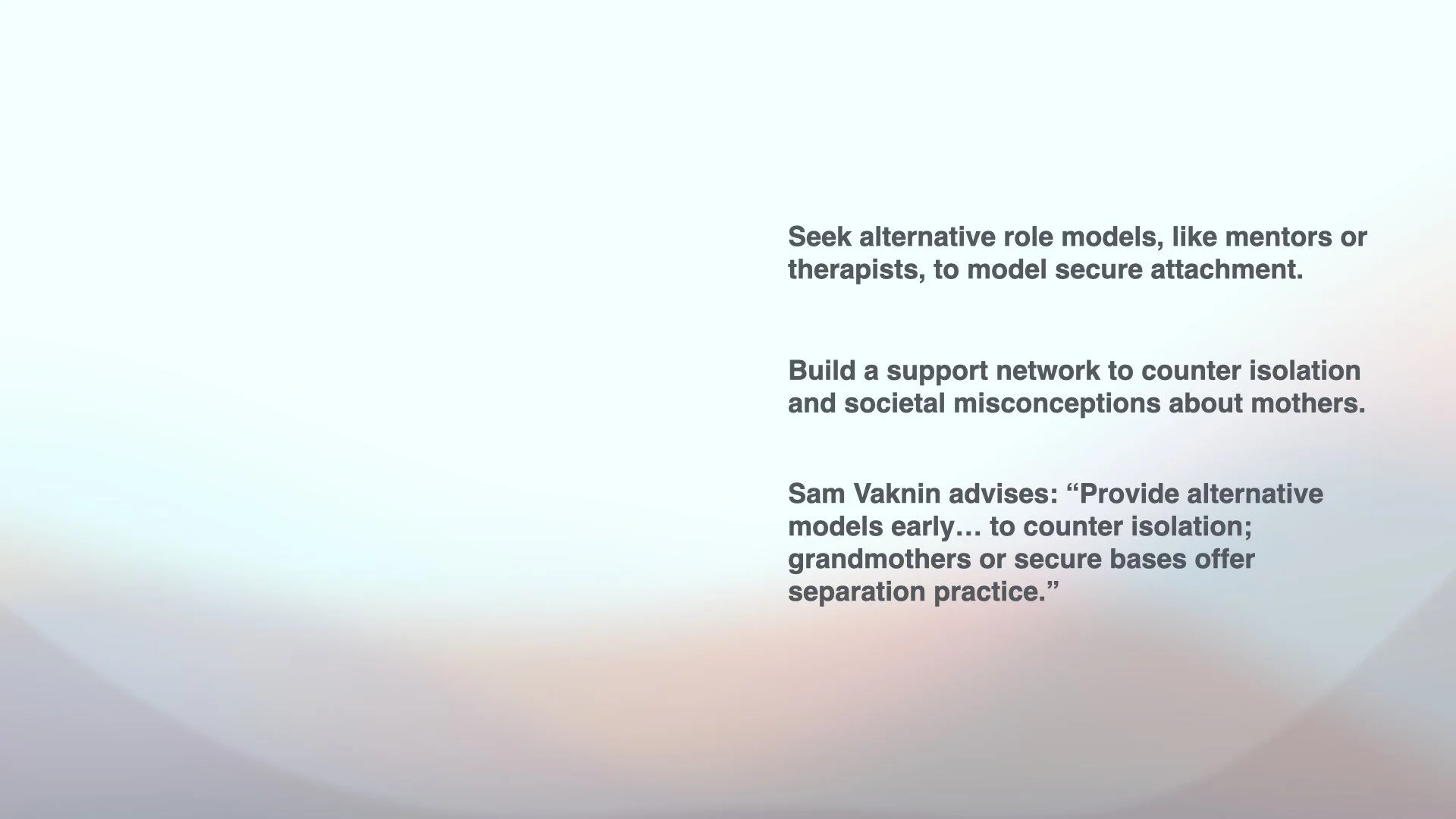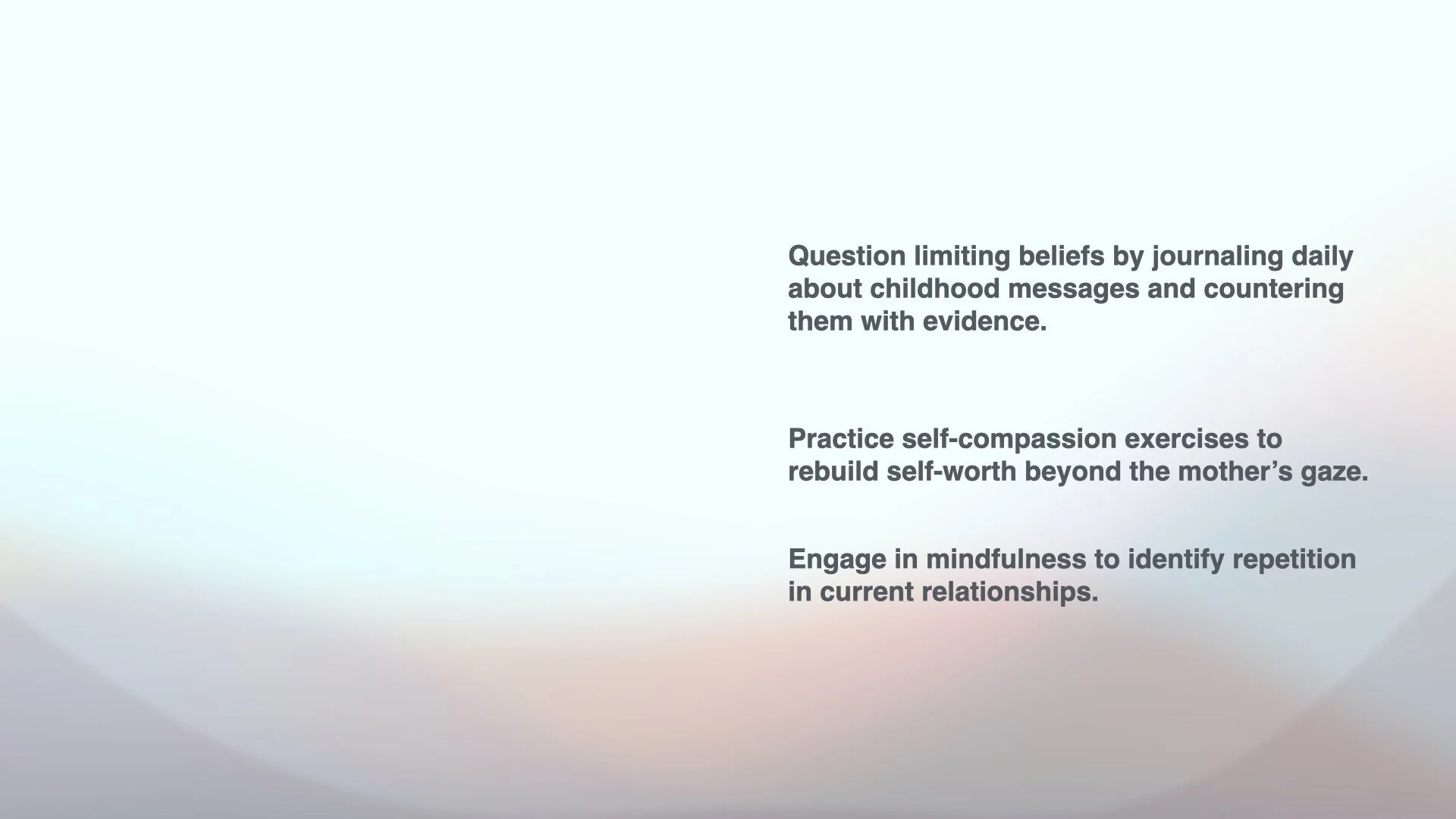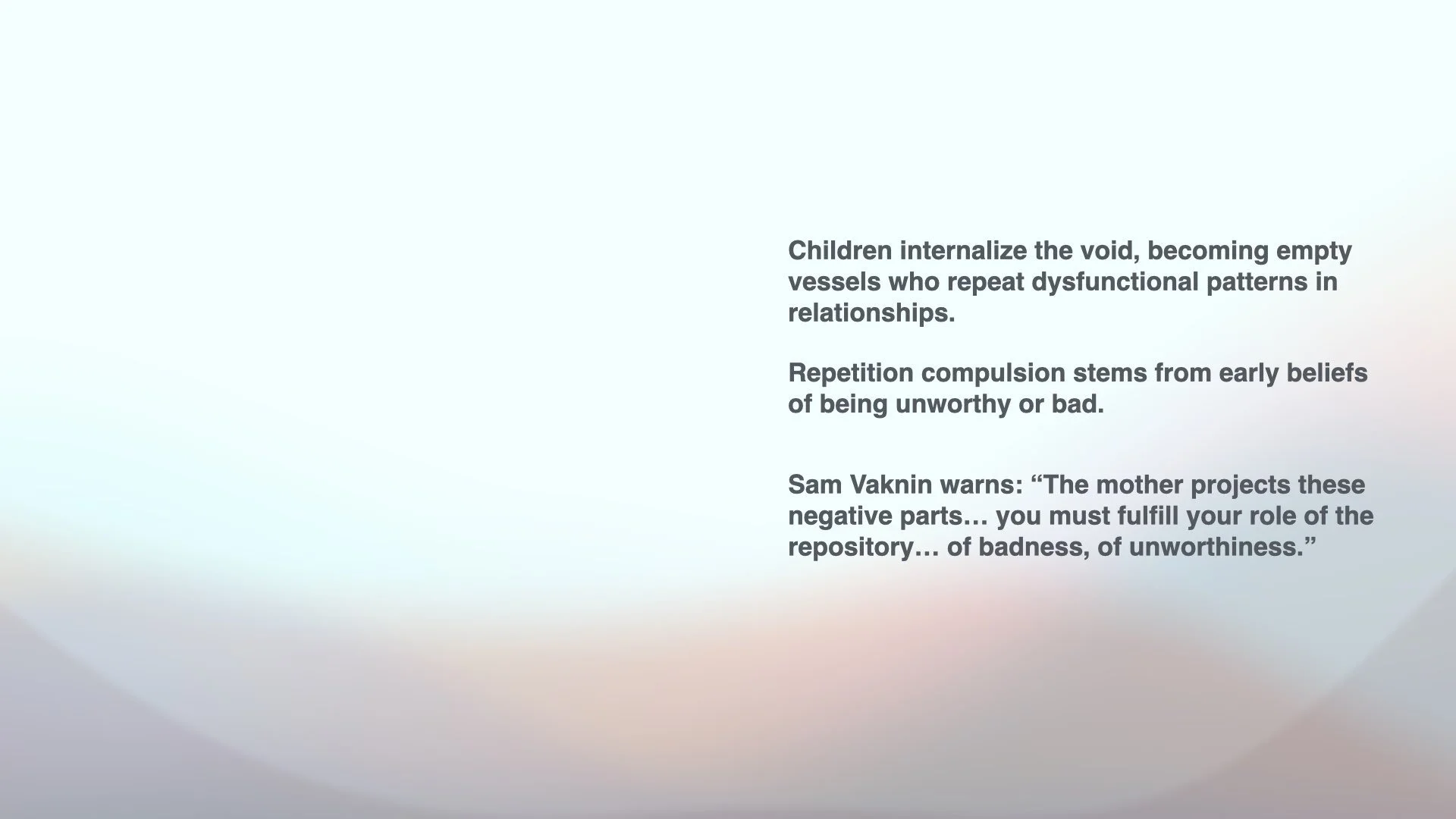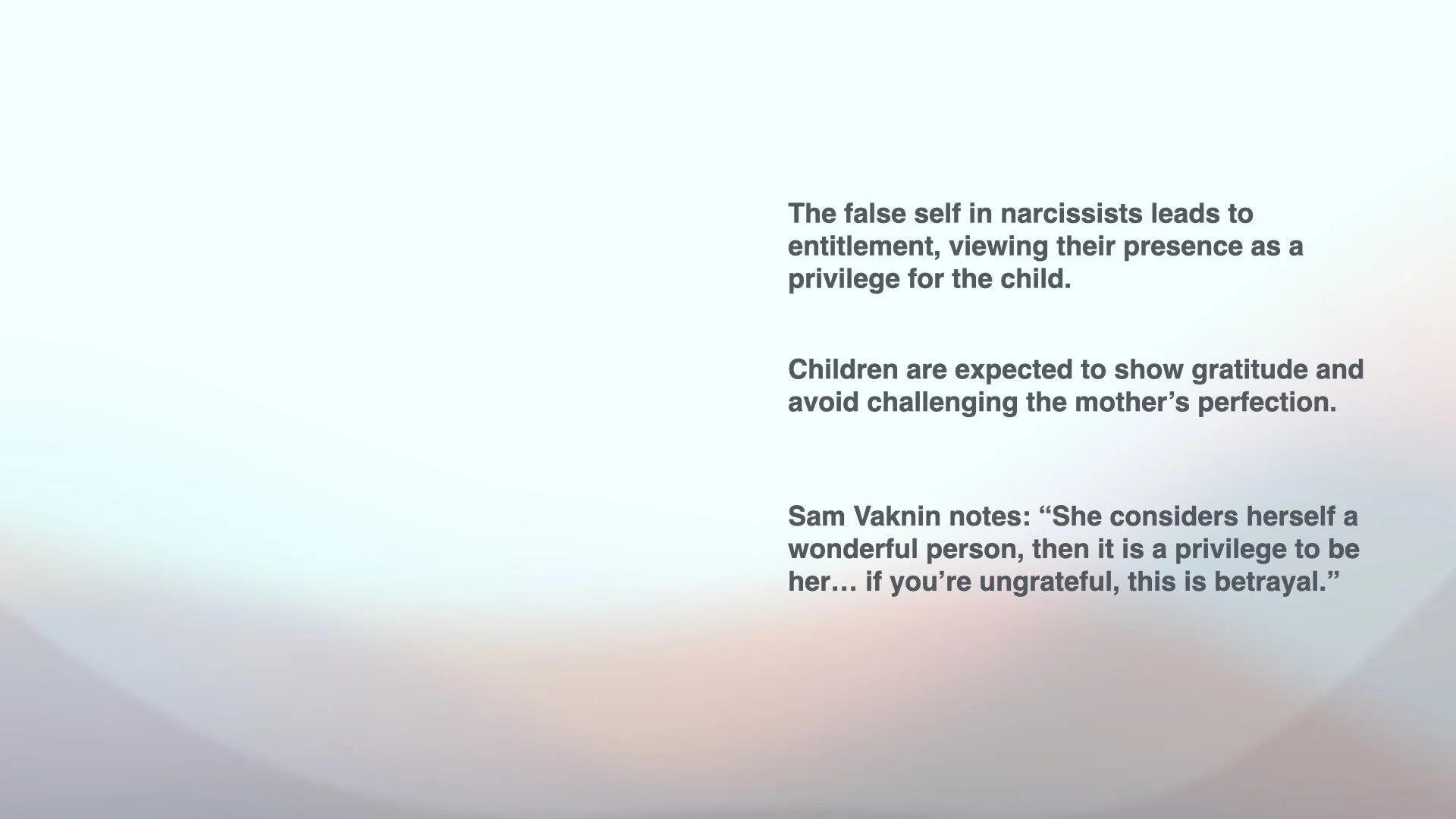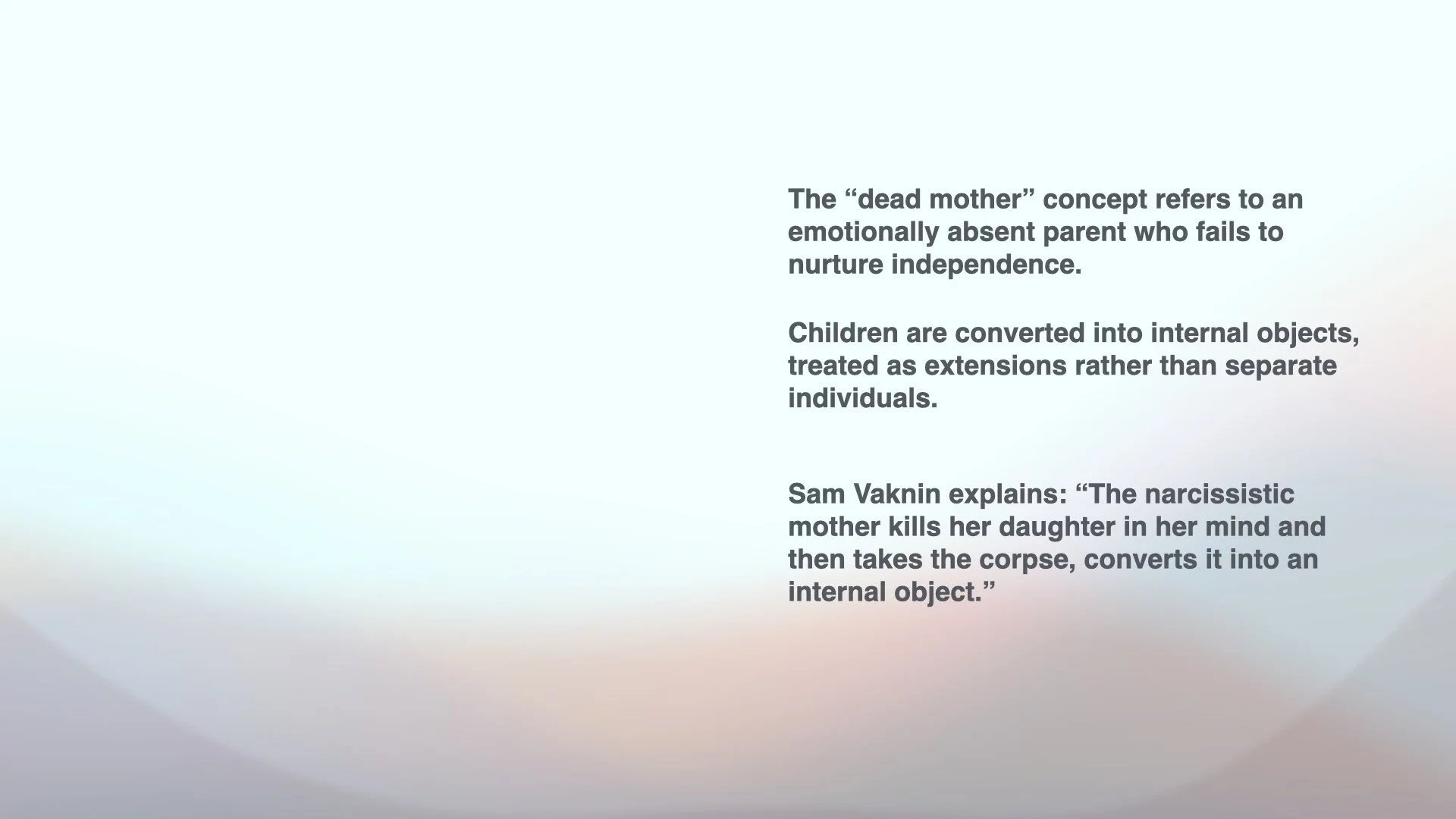Understanding the Narcissistic Mother: Dynamics, Impact, and Pathways to Healing
As a registered social worker and therapist in Toronto, Ontario, with over 14 years of collective experience in social work and five years as a therapist, I often explore the profound challenges faced by individuals raised by narcissistic parents. In this blog post, I delve into the specific dynamics of a narcissistic mother and her relationship with a son or daughter, drawing from insights in a recent interview with psychologist Marcia Maia and expert Sam Vaknin (watch the full interview here: https://youtu.be/vzuE4V9jpH4?si=8hQHHHBsNR5-AIQz). This supplements my YouTube video on the topic, focusing on how such family origins can hinder independence, self-worth, and future relationships. If you're searching for guidance on narcissistic abuse recovery, understanding the "dead mother" concept, or strategies like going no contact, read on for clarity and actionable steps.
The Void and Emptiness in Narcissistic Mother-Child Relationships
Many who confront a narcissistic mother experience a profound void—this emptiness, like yelling into a void with no response. As Sam Vaknin explains, the narcissist is a "dead mother," projecting this void onto the child. They introduce death early, converting the son or daughter into an internal object, a snapshot or ghostlike extension of themselves. This isn't alive; it's minimized and subjugated. A healthy mother allows differentiation and independence, but the narcissistic gaze is unhealthy—it sees the child, but only to make them an interject, sacrificing their autonomy at a young age.
Consider this: the narcissistic mother's false self acts like a deity in a death cult, demanding entitlement. When you glimpse this emptiness and call out imperfections, they reject it, believing their mere presence warrants gratitude. They split you into good or bad objects—if you oppose, you're seen as dumb, bad, or evil, leading to punishment like financial abuse, name-smearing, or exclusion. This dynamic echoes films like Shine, where a narcissistic parent stifles independence, viewing the child solely as an extension.
The Unhealthy Gaze and Its Long-Term Effects
The trauma isn't absence of gaze, but its wrongness. The narcissistic mother looks at you with attention, yet only as an empty vessel for their agenda. You're to be seen but not heard, grateful for their "greatness," without questioning. This introduces death—pathologically undermining your life force, immune system, and relationships. Everything must filter through them; independence threatens their control.
In society, mothers hold cache, especially covert or communal narcissists who play victim, pulling heartstrings to scapegoat you. They convince siblings, family, and friends you're inconsiderate, spreading lies. From early childhood, they sacrifice you to their false self, born from their own unmet needs. This internalization creates limiting beliefs: you're a negative void, subjugated, repeating compulsion in romances, friendships, or work—walking as a "dead person," low-key, aligning with their agenda for "love."
Confronting the Child Part and Entitlement
When confronting, you first see the false self's child part—this needy, manipulative aspect they unconsciously weaponize. Subconsciously, you've been trained to comfort it, repeating their unowned childhood material. But it's an illusion; they won't admit it. Their entitlement shines: they're superior, perfect, and your presence in their life is a gift. Questioning triggers narcissistic rage, projection as bad object, and family-wide scapegoating.
Pathways to Recovery: No Contact and Post-Traumatic Growth
If dealing with a true narcissistic mother, going no contact is essential—you're just an extension, making accountability impossible. Address internalized dead mother interjects through inner work: question limiting beliefs, seek therapy for emotional starvation from youth. New relationships or supportive friends give "life," threatening the narcissist, who undermines them to keep you dependent.
Overcoming requires a near-miracle, but post-traumatic growth is possible. Recognize Freud's Thanatos principle—the drive toward death they impose. Reclaim independence by healing core wounds. Reflect: How has this dynamic shown in your life? What beliefs hold you back?
For deeper support in narcissistic abuse recovery and scapegoat healing, download the Reports for The Scapegoat & Narcissistic Abuse Recovery Course + 45pg Healing Toolkit here: https://blaketherapy.ca/the-ultimate-toolkit. This resource aids in building emotional resilience and family dynamics support.
If this resonates, share your thoughts below—how has understanding the narcissistic mother impacted your journey? For personalized guidance, schedule a free 15-minute consultation at https://calendly.com/blake-andersons-session-invite/free-15min-consult-video-call-clone or visit my website at https://blaketherapy.ca/.


